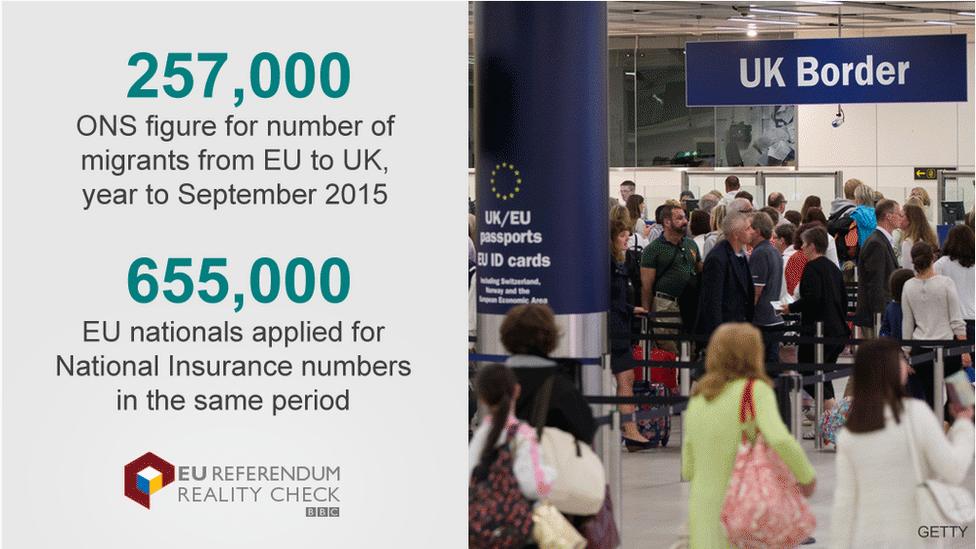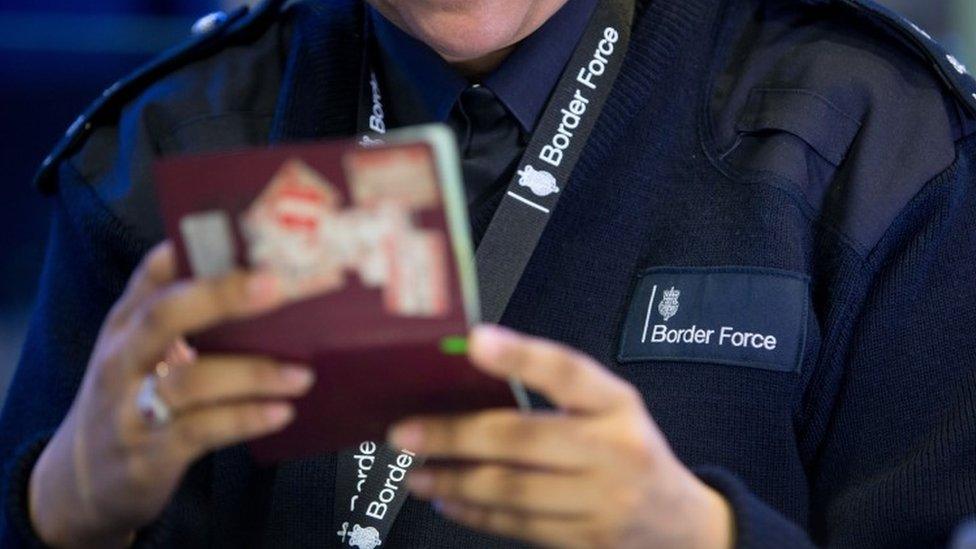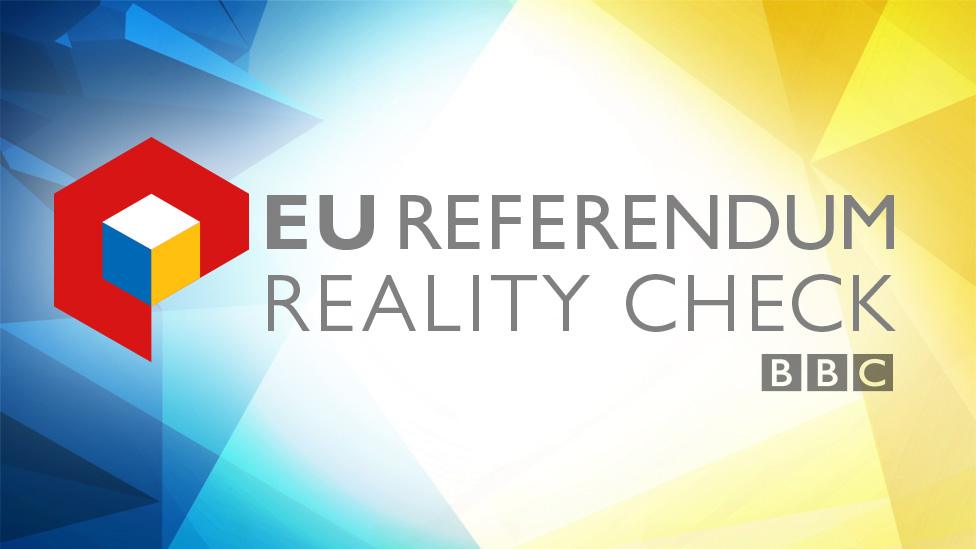Reality Check: Are NI numbers a good migration measure?
- Published

Campaigners to leave the European Union have been badgering the government about the reliability of the official immigration statistics.
Nigel Farage is wondering why, as Jonathan Portes has been pointing out, external, the Office for National Statistics (ONS) figures for migration to the UK from other EU countries is so much lower than the number of National Insurance numbers allocated to EU nationals.
According to the most recent comparable statistics, migration to the UK from the rest of the EU, external was 257,000 in the year to September 2015, but during the same period, 655,000 EU nationals registered for National Insurance numbers, external (Ninos).
Mr Farage smells a rat: "They are pulling the wool over our eyes. Ninos are a simple and clear reflection of the real numbers of people in this country, as without them you can neither legally work, nor claim benefits."
Now the government has promised to tell us, external how many of the Ninos issued are still active - in other words, how many of the EU citizens who registered are currently paying UK tax or claiming benefits.
But are Ninos a good measure of immigration?
There is no question that the official immigration figures, based on a survey taken at ports and airports, are imprecise, with the ONS 95% confident that the immigration figure is within plus or minus 23,000 of the true figure.
More importantly, though, the ONS figures only aim to measure long-term migration. They use the UN's definition, external of a long-term migrant as someone who moves country for a year or more.
When it comes to National Insurance numbers, on the other hand, there is no minimum stay in the UK. Everyone who wants to work in the UK must have a National Insurance number, even if they're only working in the country for a few weeks.
What's more, Ninos are unique to an individual, so once you've received one, it's yours forever. This means that not all those who HMRC reveal to be "active" will necessarily belong to people who have been in the country continuously since their number was issued - they could have left and returned.
The ONS statistics also include people who are not planning to work or claim benefits, such as children or non-working partners. These people don't need a Nino when they arrive, but can apply for one in the future. This means someone registering for a Nino could have arrived at any time, not necessarily in the year or quarter in question.
It's not hard to see how the two sets of figures would be different. The question is, should they vary this much, or is there a problem with the way the ONS currently gathers its data? HMRC has said it will work with the ONS to help reconcile all available sources of statistics, including Ninos, to ensure the figures are as accurate as possible.
With this process rumbling on - and the latest immigration and Nino statistics due out on 26 May - this issue is sure to keep providing fuel for the EU debate, coming just a month before the referendum.
Reality Check verdict: There are good reasons why the two numbers would be different, but they are strikingly far apart, and next month's figures showing how many of the numbers are active should help reconcile the two.
UPDATE 12 May: The ONS has released a note, external saying that the divergence between the migration figures and the NI numbers is due to an increase in short-term migration. You can read more about it here.


READ MORE: The facts behind claims in the EU debate

- Published4 April 2016

- Published22 February 2016
